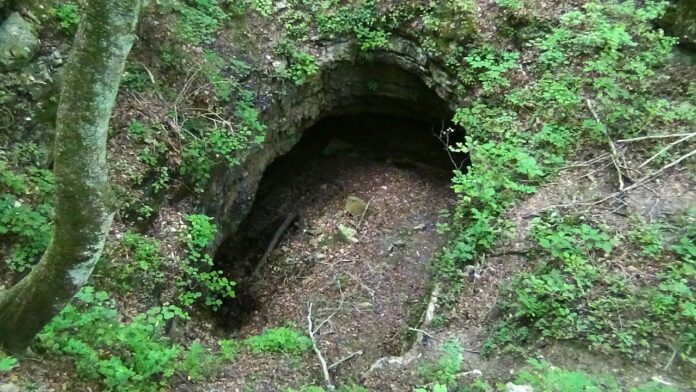
My family’s summer vacation was broken up into four segments over one week. When completed, our road trip would look roughly like an oval, or even more like a kidney bean.
After our first stop at Caesar Creek State Park in Ohio, we traveled south toward Kentucky. We passed over bridges in Cincinnati while the kids peered out their windows at the various stadiums and businesses downtown. It was quite a change from our rolling hills and wide-open fields at home.
We were on our way to Mammoth Cave National Park in south-central Kentucky. The park’s 52,000 acres is a playground for hikers, boaters and cave explorers. I wanted the opposite of a sunny beach vacation and a characteristic of a cave is complete darkness. Even though Mammoth Cave was a new destination for my family, it has a rich history as a vacation destination.
Big attraction
Mammoth Cave is known for being the longest cave system in the world. As of now, there are over 400 miles of explored caves. Some scientists estimate that there are possibly another 600 miles still to be explored. Mammoth Cave was one of the first scenic attractions in the United States.
Named for its massive size, Mammoth Cave’s tourism is thought to have begun in 1816. Before tourism, the cave system was mined for saltpeter during the War of 1812. The large underground passages and chambers fell under the category of “big is beautiful” like other natural wonders in the United States like the Grand Canyon and giant sequoias. Steamboat and railroad travel increased tourism to the area.
Exploration and tourism continued to grow until the need for preservation became evident. Many citizens advocated for the area to be established as a national park. Mammoth Cave was dedicated as a national park on July 1, 1941. Workers staying at several CCC camps improved and created trails throughout the cave’s passageways. Work was done above ground as well planting trees and creating stone structures.
Laborers also improved lodging available in the park including the woodland cottages. We stayed in the campground next to the cottages and only a quarter of a mile from the visitor center. During our three days at the park, we never had to get back into our vehicle. Another bonus to our camping trip was that our friends met us there and camped with us.
Cave tour
We did all the regular camping things like playing cards by firelight and roasting s’mores but at the top of our list of activities was a cave tour. Several months earlier, we had booked a historic tour online. We wanted a tour less than two hours in length and we didn’t want to be crawling through teeny-tiny tight spaces.
On a previous trip with our two combined families, we experienced a nervous child for the duration of a cave tour. We wanted to be sensitive to any insecurities while still experiencing the caves. A fully lit walking tour about the history of the caves checked off all the criteria. The first enormous chamber was our first indication that we would not be disappointed.
After following our guide past a waterfall and down a long passageway, we could see the remnants of a saltpeter mine. He informed us that without the saltpeter mined from Mammoth Cave, the United States wouldn’t have had the gunpowder during the War of 1812. He stressed that thanks to Mammoth Cave, we drive on the right side of the road.
While the cave helped freedom ring loudly for our nation, ironically many people working in the mines were enslaved. One particular African American slave, Stephen Bishop, was one of the first to make maps of the cave. He was also the first person to cross the Bottomless Pit, a 105-foot deep pit within the cave system. When he crossed the pit by crawling across a wooden ladder with a lantern hanging in his mouth, he enabled the exploration of many more miles of cave passageways beyond the pit.
Challenges
Three significant areas proved challenging for our family. The girls felt a little claustrophobic descending into the area known as Fat Man’s Misery. The passageway narrowed down to a crevice only passable by turning sideways. The next section, Tall Man’s Misery, required stooping and walking like a duck.
My most challenging section was climbing the 65-foot tower located in Mammoth Dome. The tower is like a fire tower with open grates and risers. I am not a fan of heights. The tower was so eerie with the dim lighting in the cave, I declared loudly that the experience was going to be repeated in my nightmares. So much for bravery in front of the children on the tour.
Our tour went to a depth of 300 feet below ground. It was a journey that informed us and amazed us. It made us realize that there is so much more to our surroundings than what meets the eye on the surface.












